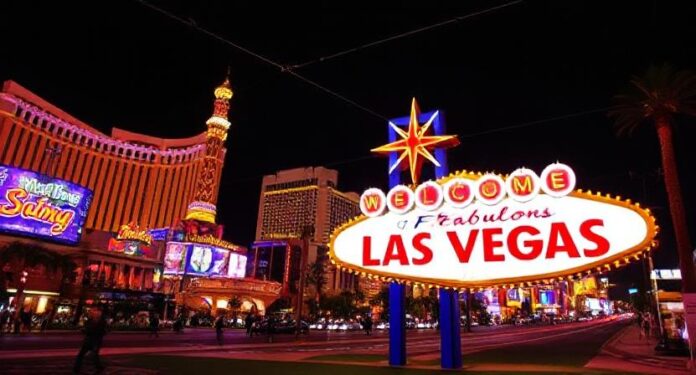Visitor Numbers Fall Across Las Vegas: Impact on Hotels, Casinos, and Entertainment
Las Vegas, often hailed as the Entertainment Capital of the World, is facing a significant downturn in tourism, a trend that is raising alarm bells across its iconic hotels, bustling casinos, and vibrant entertainment scenes. Recent reports indicate that visitor numbers are plummeting, impacting everything from passenger traffic at Harry Reid International Airport to the overall economy of the city.
Declining Passenger Traffic
Harry Reid International Airport recently reported a concerning statistic: over 4.56 million passengers traveled through the airport in August, marking a nearly 6 percent decline from the same month last year. This downturn has been consistent, as passenger traffic has fallen for three consecutive months, with year-to-date numbers dipping by 4.5 percent compared to 2024. The total passenger count is now around 37 million, highlighting a stark contrast to the tourism-driven economy that Las Vegas has built over decades.
Diving deeper into the numbers, domestic travel was the most affected, showing a decrease of 5.9 percent. International visitor numbers also declined, albeit slightly less at 3.7 percent. The struggles of low-cost carriers have been particularly noteworthy; Spirit Airlines experienced an astonishing 46.3 percent drop in passenger counts, stemming from financial difficulties and fewer routes. In contrast, Southwest Airlines bucked this trend with a modest 4.2 percent increase, indicating shifting dynamics in airline strategies.
Mixed Results in International Travel
While some international players in the airline industry saw declines, others made impressive gains. Canadian airlines like Air Canada reported a steep decline of 40 percent, while WestJet recorded a drop of 34 percent. On the flip side, Mexican carriers such as Volaris and Vivaaerobus have thrived, benefiting from increased demand for direct flights to Las Vegas. This mixed bag of outcomes reflects a larger trend in the overall international travel landscape, where specific routes and destinations attract varying levels of interest.
Impact on Hotels and Casinos
The decline in visitors is reverberating through the core industries of Las Vegas. Early July saw hotel occupancy rates fall to 66.7 percent—an alarming 17 percent drop compared to the previous year. This decline in occupancy is starting to have tangible effects. Many hotels are reporting reduced staffing hours, which directly impacts service quality and job security for employees. Restaurants, bars, and retail outlets on the iconic Las Vegas Strip are experiencing lower foot traffic, leading to reduced sales and potential closures.
Factors Driving the Downturn
Several key factors are contributing to the tourism slowdown. Rising costs—whether it’s resort fees, parking charges, or the inflated prices of everyday items—have led to dissatisfaction among travelers. Many visitors feel they are being overcharged, and this dissatisfaction can dissuade potential travelers from choosing Las Vegas as their vacation destination.
In addition to rising costs, economic uncertainty is playing a crucial role. Many consumers are scaling back on discretionary spending, leading to fewer trips to Las Vegas. The competitive landscape is another issue, with regional casinos and the exponential growth of online sports betting diverting attention and funds away from Las Vegas. Furthermore, the dip in convention bookings has threatened midweek occupancy rates, which traditionally bolster business travel.
A Broader Context: U.S. Inbound Travel
The slowdown in Las Vegas mirrors a broader trend in U.S. inbound travel. International arrivals have steeply declined across the country, particularly from Europe, Canada, and Mexico. Stricter visa policies, rising tariffs, and regulatory changes have been identified as major deterrents for foreign visitors. These challenges could result in a significant reduction in overall spending by international tourists, which is vital for Las Vegas and the broader U.S. economy.
Future Outlook and Industry Reactions
Looking forward, the forecasts for Las Vegas remain cautious. The World Travel & Tourism Council projects that the United States could face a loss of up to $12.5 billion in international visitor spending if current trends continue. This potential downturn puts Las Vegas in a precarious position, as local businesses look for ways to adapt to a changing travel landscape.
Addressing these multifaceted challenges will require innovative strategies from industry stakeholders. Efforts to attract both domestic and international travelers must be prioritized, while also reconsidering pricing structures to remain competitive against both local and online entertainment options. For Las Vegas to maintain its iconic status, the tourism sector must navigate these choppy waters with agility and foresight, ensuring that it adapts to the evolving needs and preferences of travelers.
The unfolding narrative of Las Vegas tourism serves as a crucial reminder of the region’s vulnerability to economic shifts and consumer sentiment. Balancing costs, enhancing visitor experiences, and appealing to diverse markets will be essential as the city strives to reclaim its position as a premier global destination.
